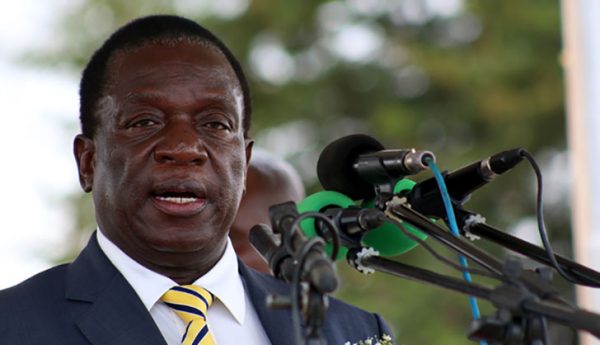Zim discovers rare minerals

Zimbabwe sits on bountiful and lucrative deposits of minerals known as rare-earth elements (REE), some of which sell for more than US$1 000 for a single kilogram and where investors are seeking alternative sources to China, which dominates production.
The 17 rare earth elements are used in the manufacture of glasses, electronics, hybrid vehicles, wind turbines, microphones and speakers, among other multiple uses, raising expectations exploitation of Zimbabwean reservs could add oomph to Government’s plan to use minerals resources to drive economic growth.
President Mnangagwa told Bloomberg on the sidelines of the 12th US-Africa Business Summit, which ended on Friday, that the discovery of the deposits – which could be the second largest after China – was still early “as far as we are concerned at Government level and policy level”.
“Recently, I have been happily surprised. I was talking to some of the American businesspeople who are at this conference (12th US-Africa Business Summit) who were saying, look, besides China, I think Zimbabwe is second in having what they call rare-earth minerals, and they say these are very valuable, but we have been sleeping on them; we didn’t know that they were useful,” said the President.
Some REEs are used in the production of LCD and plasma screens, fibre optics, lasers as well as medical imaging.
They can also be used in fertilizers and water treatment chemicals.
In addition to being used to increase plant growth and productivity, the minerals have often been used as feed additives for livestock production.
Currently, the major reserves are in China, the US, India, Brazil and Australia.
Notably, China holds about 30 percent of the world’s deposits.
Government, however, believes that it might need the skills and expertise to exploit the mineral.
President Mnangagwa said: “Anyway, this is an early discovery as far as we are concerned at Government level and policy level, but I am informed that this is a very lucrative discovery and we should begin to look at how we can exploit (them) because; one, we don’t have the technology; two, we don’t have the skills; three, we don’t even know what we have, except what we were told by other people that we have, so it is quite pleasant that we have that . . .”
Zimbabwe, he added, has huge deposits of various mineral resources.
“Fortunately Zimbabwe is endowed with huge minerals of various types. I think it is easier to ask our people what minerals we don’t have . . . Whatever you mention in terms of minerals, we have.”
Although it could not be ascertained where the REE had been discovered, geologists believe that there are some deposits in Mashonaland Central at Gungwa, Mutondongwe and Nanuta.
“These elements that make it possible for the high-tech world we live in today have been found to occur in restricted environments, including carbonites.
“Mashonaland Central province is known to host three carbonites at Gungwa, Mutondongwe, and Nanuta.
“While there has not been exploration for REE at these complexes, Gungwa is known to be enriched in lanthanum and cerium,” said the Ministry of Mines and Mining Development on its website.
Premier African Minerals, which is listed on the Alternative Investment Market of the London Stock Exchange, is also prospecting for rare-earth elements in Matabeleland North, near the Zambian border.
The 17 rare-earth elements are cerium (Ce), dysprosium (Dy), erbium (Er), europium (Eu), gadolinium (Gd), holmium (Ho), lanthanum (La), lutetium (Lu), neodymium (Nd), praseodymium (Pr), promethium (Pm), samarium (Sm), scandium (Sc), terbium (Tb), thulium (Tm), ytterbium (Yb), and yttrium (Y).
China supplies more than 80 percent of world production and more of the heavy elements in the series.
Government believes that it can leverage on the country’s mineral resources to achieve Vision 2030.
Since the advent of the new political administration, investors have been lining up to make investments in the mining sector.
Karo Resources, which has committed to invest US$4,2 billion in its local mining operations, has made considerable progress in developing its platinum mine in Mhondoro-Ngezi (Mashonaland West).
Russia is also investing US$400 million in the Darwendale platinum project as well.
Government recently sold off Zimbabwe Defence Industries’ 50 percent stake in the venture to a private company.
“They have since moved out. We have removed the Zimbabwe Defence Forces. It’s now owned by a private company. We moved out the army, which had initially been part of the shareholders. So its now 50-50: fifty percent is now owned by the Russian company and then (the other 50 percent) by a local company which bought out the army . . . I think we consummated this a few weeks ago . . .” said President Mnangagwa._The Sunday Mail


